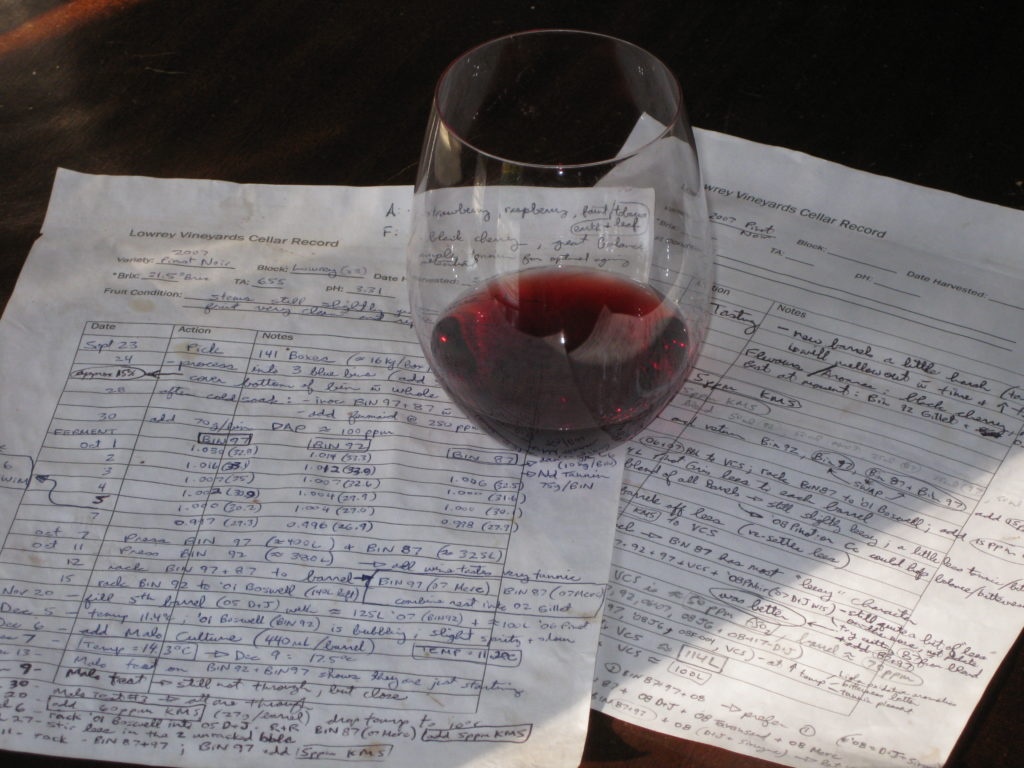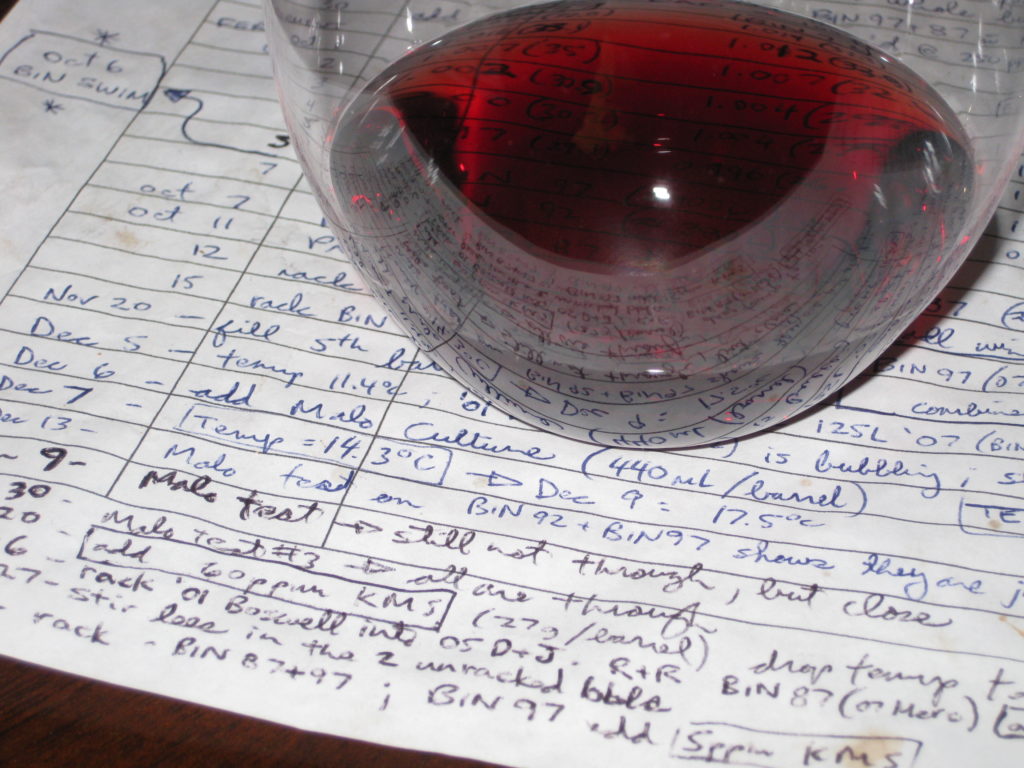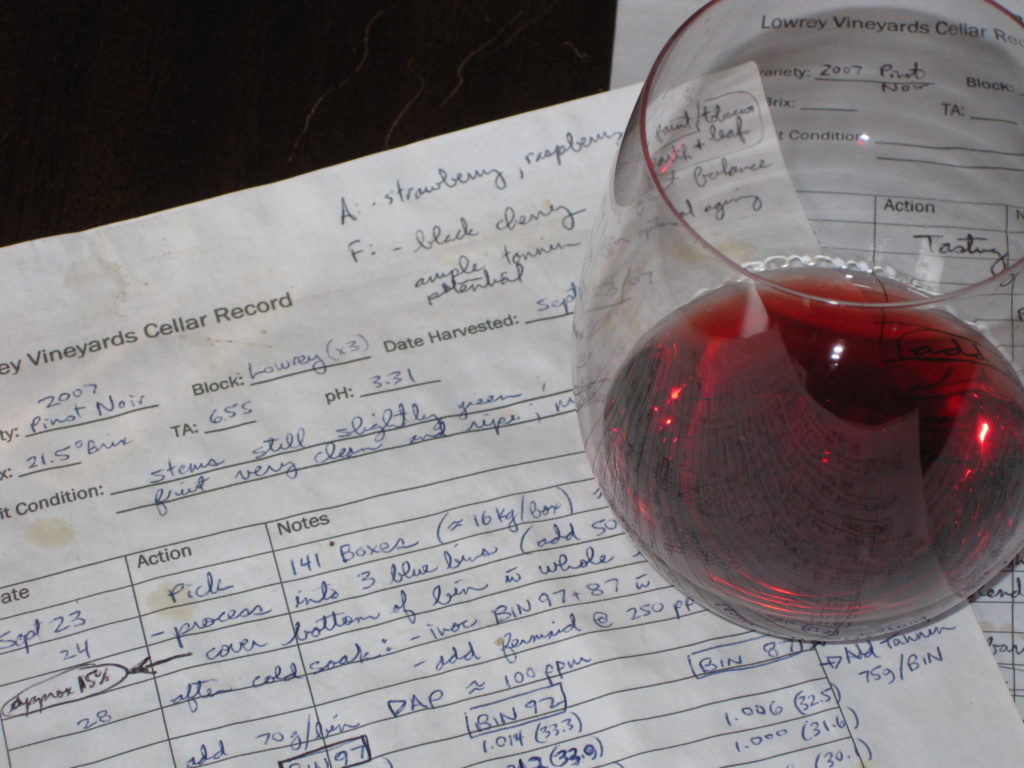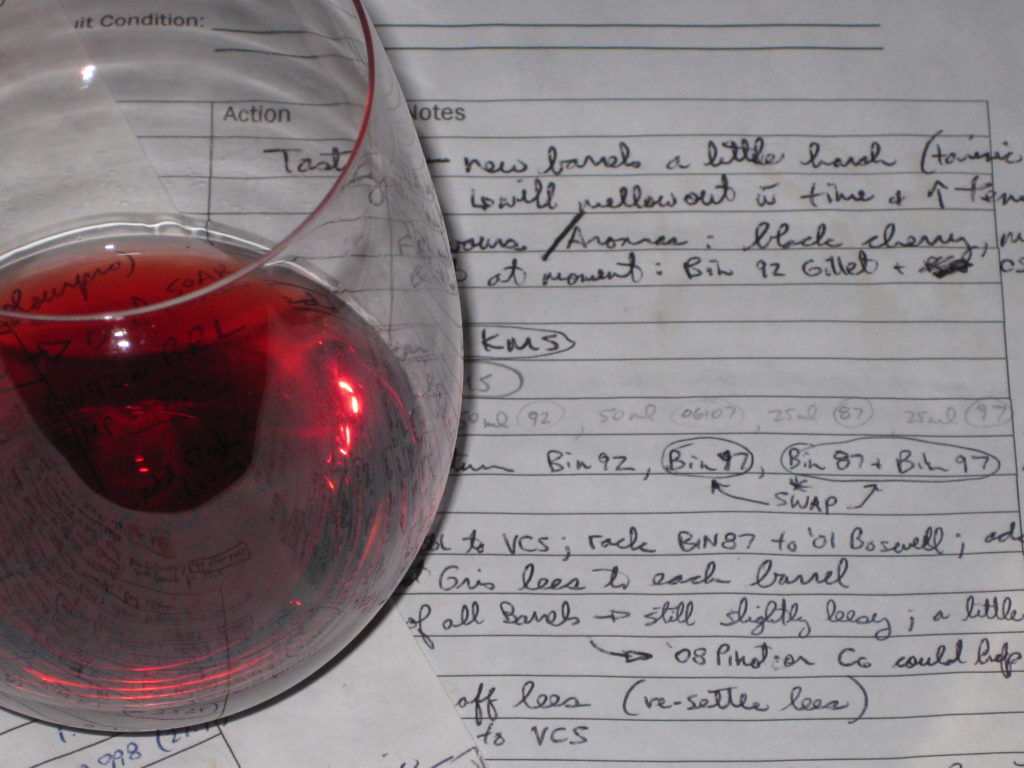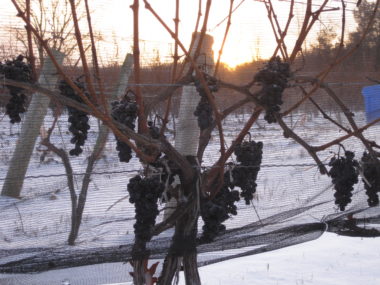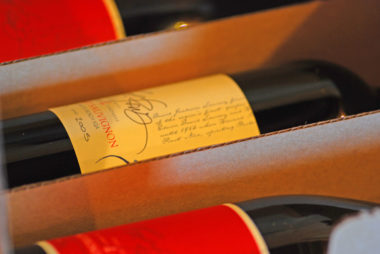In the past, all of our bottling has taken place offsite at other wineries. There was always a calming sense of security associated with these occasions knowing that we were at a place where this had been done many times before. On the eve of the first ever bottling day at our own barn, these secure feelings were nowhere to be found. I’d spent three months preparing and going over every possible problematic scenario in my head, but doubt still lingered. Would there be enough room to maneuver in our barn? Would the truck fit on our crush pad? Would my bottle choices pan out and, most disturbingly, would bottling icewine prove to be the nightmare I had heard tale of?
All these troubling thoughts kept me awake on the eve of April 6th. I was to be at the barn for 6am sharp the next morning to greet Glenn Hunt and his mobile bottling crew. As the minutes ticked by, I actually started feeling nauseous and got up to take some Pepto Bismol. It didn’t help.
I took solace in the fact that Glenn and Randy do this every day, convincing myself that they must have encountered every conceivable problem and were very seasoned at dealing with anxious winemakers. It was still dark when the truck rolled in and right away Glenn put me at ease when he looked up at the clear sky and confidently stated, “It’s going to be a great day for bottling!” If he could be excited about today, then why couldn’t I?
My second boost of confidence came at the arrival of my father-in-law and brother-in-law who had graciously offered to lend a hand. More important than their braun, they offered a good dose of comic relief that kept us all loose despite the fast-paced dynamic. In times of stress I’ve found that it’s good to surround yourself with hardworking Polish pranksters.
Set-up took far less time than I had anticipated and the first Pinot Gris bottles were rolling off the line by 7:30. Riesling, Sauv Blanc, Pinot Noir, Shiraz and Cab Sauv followed in quick succession. I figured it must be close to lunch at that point and had to look twice when my watch read 10:30! We were flying – but the dreaded icewine still loomed.
Bottling into 200ml icewine glass presents a bevy of problems to the line. The bottles are very tippy, and filling consistently with such a small amount of wine is tricky. Thankfully, our Cabernet Sauvignon Icewine was fairly cooperative and we were able to wrap up bottling by noon. I’d endured months of sleepless nights and we had bottled our entire 600 cases in half a day…the sheer stupidity of this is not lost on me.
I would like to thank Glenn, Randy and all my helpers for making the first Five Rows bottling day a huge success.

